Introduction
Have you ever wondered how those friendly little chatbots on websites work? You know, the ones that provide instant responses and assist you round the clock? Well, let's dive into the world of chatbots together.
In this beginner's guide, we'll explore the magic behind chatbots, focusing on Natural Language Processing (NLP).
We'll break down core concepts like tokenization and sentiment analysis, and introduce you to spaCy, the ideal NLP library for building chatbots.
Why is this important? Chatbots are revolutionizing communication, enhancing user experience, and streamlining business operations. According to a study by Oracle, 80% of businesses plan to use chatbots by 2024.
Business Insider Intelligence report predicts global retail consumer spending via chatbots will reach $142 billion by 2024.
They offer personalized support, generate leads, and provide 24/7 availability. With spaCy, you can build a chatbot that understands and responds to human language effectively.
Sounds interesting, right? Let's get started! We'll guide you step-by-step through building your first chatbot, from setting up your development environment to implementing dialogue management. We'll also share tips on testing, refining, and maintaining your chatbot.
What are Chatbots, and Why are they Revolutionizing Communication?
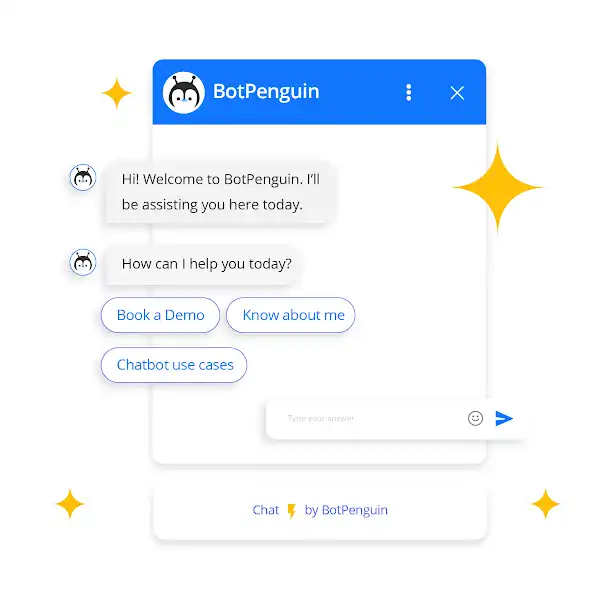
Chatbots are computer programs designed to simulate human-like conversations with users.
They use artificial intelligence (AI) algorithms to understand and respond to user queries and messages.
These AI-powered assistants have gained popularity due to their ability to provide instant responses and assist users around the clock.
Chatbots are revolutionizing communication in various ways. By automating customer support, they can alleviate the burden on human agents and provide quick and accurate resolutions to common queries.
Chatbots also offer efficient lead generation by engaging potential customers and collecting valuable business information.
Additionally, they can enhance user experience by creating interactive and personalized interactions.
Benefits of Chatbots for Businesses
Chatbots enable businesses to provide round-the-clock support, ensuring customers get assistance whenever needed.
Improved Customer Service
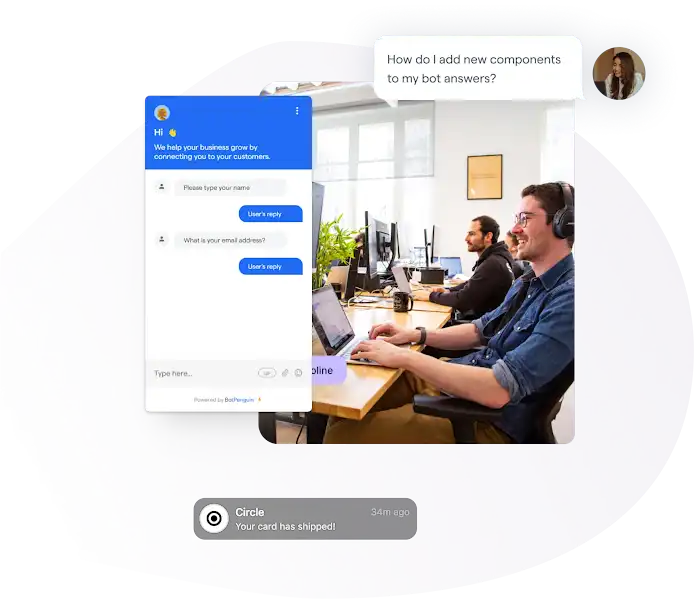
With improved customer service improves customer satisfaction and helps build trust in your brand.
With instant responses and access to a wide range of information, chatbots can address customer concerns efficiently.
Streamlined Operations
Implementing chatbots can streamline business operations by automating repetitive tasks.
Chatbots can handle routine inquiries, perform basic transactions, and provide self-service options, freeing human agents to focus on more complex issues. This improves efficiency and allows businesses to maximize their human resources.
Increased Lead Generation
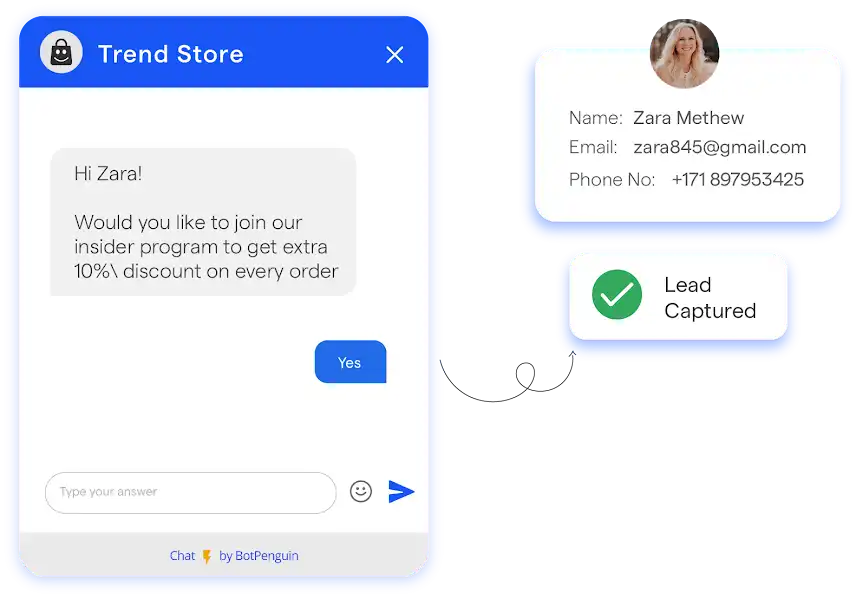
Chatbots can engage potential customers in proactive conversations, gathering essential details that can be used for lead generation.
Chatbots can nurture leads and guide them towards conversions by asking questions and providing relevant information.
This automated process saves time and resources while boosting lead generation efforts.
24/7 Availability
Chatbots are available 24/7, providing users instant support and information outside traditional business hours.
This accessibility ensures that users can get assistance whenever needed, enhancing customer experience and satisfaction.
Personalized Support
By analyzing user interactions, chatbots can offer tailored suggestions and solutions, creating a more personalized user experience.
Streamlined Interactions
With chatbots, users can engage in streamlined interactions without navigating complex websites or applications.
Chatbots can understand user queries and provide direct answers or guide users through processes, simplifying the overall user experience.
Understanding the Magic Behind Chatbots: Natural Language Processing (NLP)
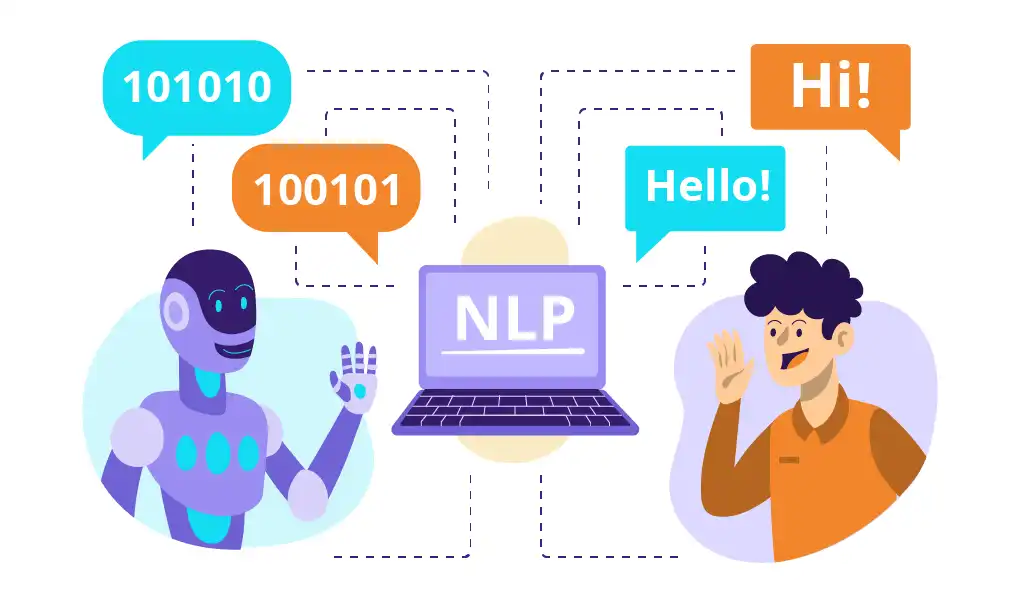
Natural Language Processing (NLP) is the technology that allows chatbots to understand and respond to human language.
We will discuss the core concepts of NLP, from tokenization to sentiment analysis, and why spaCy is the ideal NLP library for crafting chatbots.
Core Concepts of NLP: From Tokenization to Sentiment Analysis
NLP involves several core concepts that enable chatbots to process and understand human language.
One of these concepts is tokenization, which involves breaking down a text or sentence into individual words or tokens.
Tokenization allows chatbots to analyze the structure and meaning of sentences, ensuring accurate comprehension.
Another important concept is named entity recognition, which involves identifying and classifying named entities such as names, dates, organizations, and locations within a text. This is crucial for chatbots to understand context and provide relevant responses.
Sentiment analysis is another powerful aspect of NLP. Chatbots can use sentiment analysis to determine the emotional tone of a text, whether it is positive, negative, or neutral. This allows chatbots to respond appropriately and engage in empathetic conversations with users.
And beginning with NLP powered chatbot isn't that tough. Meet BotPenguin- the home of chatbot solutions.
With BotPenguin you can easily train your chatbot on custom data, paint them with your logo and branding, and offer human-like conversational support to your customers.
And that's not it. BotPenguin makes sure that you reach your customers where they are by offering AI chatbots for multiple platforms, thus making omnichannel support look easy:
- WhatsApp Chatbot
- Facebook Chatbot
- Wordpress Chatbot
- Telegram Chatbot
- Website Chatbot
- Squarespace Chatbot
- Woocommerce Chatbot
Why spaCy Stands Out: The Ideal NLP Library for Crafting Chatbots
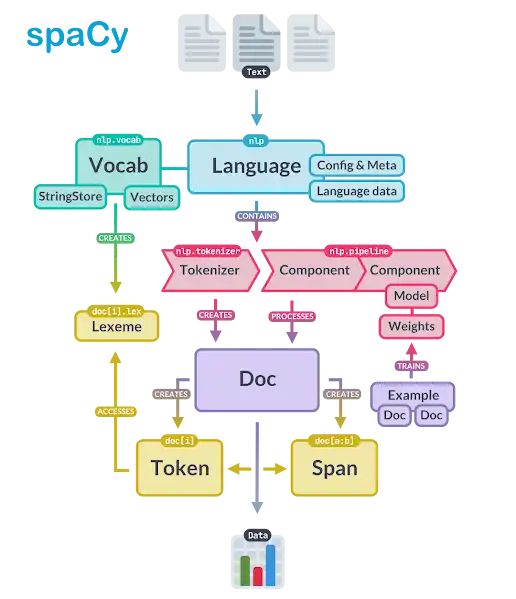
spaCy is a popular NLP library known for its efficiency, ease of use, and powerful features.
It provides developers with comprehensive tools and functionalities to build sophisticated chatbots. Here are some reasons why spaCy stands out among other NLP libraries:
Efficiency
spaCy nlp is designed to be highly efficient, making it a great choice for building chatbots that require real-time processing.
Its optimized algorithms allow for speedy text processing, enabling chatbots to swiftly handle large volumes of text and respond instantly to user queries.
Ease of Use
spaCy is known for its user-friendly interface and straightforward API (Application Programming Interface).
Its intuitive documentation and clear code examples make it easy for developers to understand and implement NLP functionalities for their chatbots.
With spaCy nlp, developers can quickly get started and focus on building intelligent conversation systems.
Suggested Reading:
Discovering the Capabilities of spaCy: Empowering NLP
Powerful Features
spaCy nlp offers a wide range of powerful features that enhance the capabilities of chatbots.
It includes pre-trained models for tasks such as named entity recognition, part-of-speech tagging, and dependency parsing. These models provide a strong foundation for chatbots to understand and analyze text effectively.
Additionally, spaCy allows developers to train their custom models using their data, enabling chatbots to specialize in specific domains or industries. This flexibility empowers developers to create chatbots that meet their business's or target audience's unique needs.
Next, we will see how to build your first chatbot with spaCy nlp.
Building Your First Chatbot with spaCy: A Step-by-Step Guide
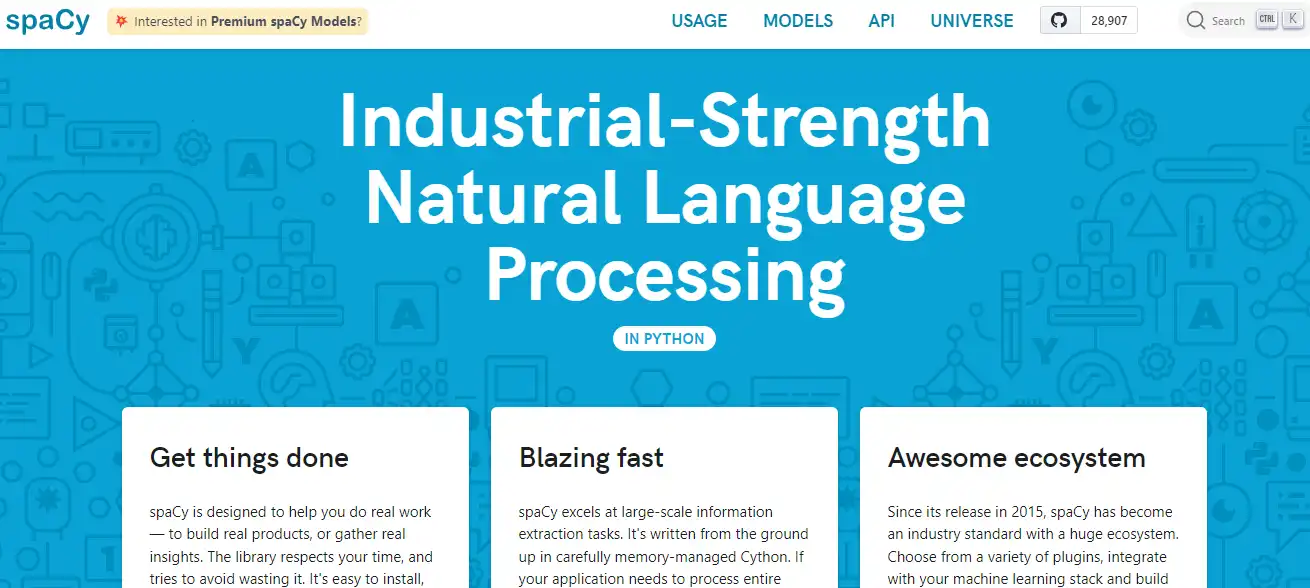
This section will discuss the step-by-step journey to build your first chatbot using spaCy.
Setting Up Your Development Playground: Installing Essential Tools
To start your Chatbot journey, you must set up your development environment with the necessary tools. Here's a beginner's guide to installing spaCy and the required libraries:
A Beginner's Guide to Installing spaCy and Required Libraries
Step 1
Python: The Foundation
spaCy works within the Python environment. If you haven't already, head to [python.org] and download the latest Python version compatible with your operating system.
The installation process is straightforward and guides you through setting up Python on your machine.
Step 2
Installing SpaCy with pip
Once Python is ready, open your command prompt (Windows) or terminal (Mac/Linux). Here, use pip, the Python package manager, to install spaCy. Simply type the following command and press enter: pip install spacy.
This command fetches and installs spaCy from the Python Package Index (PyPI), making it available for your Python projects.
Step 3
Downloading a Language Model
spaCy utilizes pre-trained language models for NLP tasks. To work with English text, for instance, download the English model using this command:
python -m spacy download en.
spaCy offers various language models, so you can choose the one that aligns with your project's specific needs.
Step 4
Expanding Your NLP Toolkit (Optional)
Depending on your project's complexity, you might require additional libraries.
NLTK (Natural Language Toolkit) offers functionalities for various NLP tasks, while scikit-learn delves into machine learning algorithms. The beauty lies in pip's ability to manage these installations as well. For example, to install NLTK, you'd use: pip
Remember to replace "nltk" with the desired library name whenever you need to install additional tools for your NLP endeavors. With spaCy and the required libraries installed, you can now build your chatbot!
Prepping Your Data for Chatbot Success: Text Cleaning and Normalization Techniques

Before feeding your data to the chatbot, it's essential to clean and normalize the text to ensure accurate analysis. Here are some essential techniques for text cleaning:
Essential Techniques
The techniques for text cleaning are the following:
- Normalization: Convert text to a standard format by removing accents, diacritics, or special characters. This ensures consistency and avoids confusion.
- Lowercasing: Convert all text to lowercase to ensure case-insensitive comparisons. This helps in matching intents and entities properly.
- Removing Punctuation: Remove punctuation marks from the text, as they often lack significant meaning and can interfere with analysis.
By applying these text-cleaning techniques, you can ensure that your chatbot receives clean and consistent input for accurate processing.
Building the Brains of Your Chatbot: Core Functionality with spaCy
Now let's dive into the core functionality of spaCy nlp for your chatbot. Two essential aspects to focus on are intent recognition and entity extraction.
Mastering Intent Recognition - Identifying User Goals with spaCy
Intent recognition involves understanding the goal or intention behind a user's message.
For example, if a user asks, "What's the weather like today?", the intent could be to inquire about the weather. spaCy provides tools to train models to recognize intents and classify user messages accordingly.
Entity Extraction - The Secret to Personalized Chatbot Responses
Entity extraction involves identifying and extracting specific pieces of information from user messages.
For instance, from the message, "Book a table for two at 7 pm," the extracted entities could be "table" and "7 pm." By extracting entities, your chatbot can provide personalized responses based on the user's input.
Suggested Reading:
Exploring Chatbot Frameworks that Integrate Well with spaCy
Crafting Engaging Conversations: The Art of Dialogue Management
To create engaging conversations, your chatbot needs effective dialogue management strategies. Here are some key considerations:
Designing Effective Dialogue Management Strategies
Map out the possible user intents and the corresponding bot responses to design a flow for your chatbot's conversations.
Consider different scenarios and plan how your chatbot will handle them. This will help ensure smooth and meaningful interactions.
Implementing Natural Language Generation for Human-Like Responses
By implementing natural language generation, your chatbot can generate responses that feel more human-like.
Use templates, rule-based systems, or even machine learning techniques to generate contextually appropriate and engaging responses for users.
Next, we will see how to test, refine and maintain your chatbot.
Ensuring Success: Testing, Refining, and Maintaining Your Chatbot
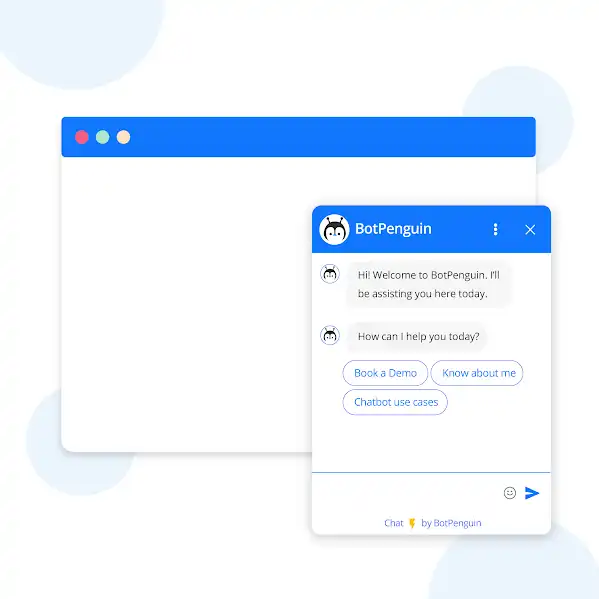
Congratulations on building your chatbot! It's time to ensure its success by testing, refining, and maintaining it.
This section will discuss how to test and evaluate your chatbot's performance, embrace user feedback for continuous improvement, and keep your chatbot up-to-date with spaCy updates.
Testing and Evaluating Chatbot Performance - Are You Meeting User Needs?
Testing and evaluating your chatbot's performance is essential to meet user needs. Here are some key metrics to consider:
Key Metrics for Measuring Chatbot Success
The key metrics includes:
- Accuracy: Measure how accurately your chatbot understands user intents and extracts entities. Use a test dataset with known intents and entities to evaluate your chatbot's performance and improve accuracy.
- User Satisfaction: Gather user feedback through surveys or direct interaction to gauge user satisfaction. Ask users about their experience, whether their needs were met, and if they found the chatbot helpful.
This feedback helps identify areas for improvement and enhances user satisfaction.
- Resolution Rates: Track the chatbot's ability to resolve user queries or issues without needing intervention from a human operator. Higher resolution rates indicate an efficient and effective chatbot.
By measuring these key metrics, you can assess your chatbot's performance, identify areas for improvement, and ensure it meets user needs.
Suggested Reading:
Spacy vs NLTK: Which NLP Library is Right for You?
Embracing User Feedback and Iterative Improvement: The Key to Continuous Growth
User feedback plays a crucial role in the iterative improvement of your chatbot. Actively seek user feedback and use it to enhance your chatbot's functionality. Consider the following steps:
- Gather Feedback: Encourage users to share their thoughts and opinions on the chatbot's performance. Use surveys or provide a feedback option within the chatbot interface.
- Analyze Feedback: Analyze the feedback received to identify recurring patterns or areas needing improvement. Categorize feedback based on user experience, clarity of responses, or feature requests.
- Iterate and Refine: Use the feedback to make iterative improvements to your chatbot. Incorporate user suggestions, fix issues or shortcomings, and continuously enhance the chatbot's capabilities.
By embracing user feedback and refining your chatbot, you can ensure it evolves to meet user expectations and provide a better user experience.
Keeping Your Chatbot Up-to-Date: Maintaining Compatibility with spaCy Updates
To maintain the performance and functionality of your chatbot, it's crucial to keep it up-to-date with spaCy updates. Here are some steps to follow:
- Stay Informed: Track spaCy's new releases, updates, and bug fixes to stay up-to-date with the latest features and improvements.
- Test Compatibility: When spaCy releases updates, test your chatbot to ensure compatibility. Validate that your chatbot still functions correctly with the new version.
- Update Dependencies: If your chatbot relies on other libraries or dependencies, ensure they are also compatible with the updated spaCy version. Update these dependencies as necessary.
By staying informed about spaCy updates and maintaining compatibility, you can ensure your chatbot benefits from the latest features and improvements.
Conclusion
In conclusion, crafting chatbots using spaCy NLP is the new way to go about in the digital world.
Even the data says that the global chatbot market is experiencing a significant boom, with a value of USD 3.78 billion in 2021 and an expected Compound Annual Growth Rate (CAGR) of 30.29% from 2022 to 2027.
Chatbots are revolutionizing communication by providing round-the-clock customer support, streamlining processes, and offering personalized experiences. With spaCy, you have a robust toolkit for building chatbots that can accurately comprehend user intent and respond naturally.
This guide has given you the knowledge to construct your first chatbot, thereby allowing you to apply your NLP skills practically.
Remember, successful chatbots are user-centric. By continually testing, refining, and maintaining your chatbot, you can ensure it provides a positive user experience. Don't delay!
Leverage spaCy and your newly acquired skills to build your chatbot today and be a part of the automated communication revolution. The potential is truly boundless!
Frequently Asked Questions (FAQs)
What is Spacy and why should I use it for chatbot development?
Spacy is a powerful natural language processing library. It provides efficient tools and pre-trained models for quick and accurate chatbot development.
Can I train my chatbot to understand specific industry-related terms using Spacy?
Yes, Spacy nlp allows you to customize and fine-tune its models. You can train your chatbot to recognize industry-specific terms and improve its understanding of domain-specific language.
Is Spacy suitable for multilingual chatbots?
Absolutely! Spacy supports various languages and offers pre-trained models for different languages. Using Spacy's language-specific features, you can easily build multilingual chatbots.
How can I integrate my Spacy-powered chatbot with popular messaging platforms?
Spacy nlp provides integration options with popular messaging platforms like Facebook Messenger and Slack. You can follow these platforms' documentation and APIs to connect your chatbot.
Are there any resources available to help me learn more about Spacy and chatbot development?
Yes, Spacy nlp has extensive documentation and a supportive community. For further learning, you can refer to the official Spacy documentation, join Spacy's community forums, and explore online tutorials and blogs.


